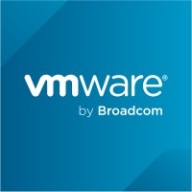

Pivotal Cloud Foundry and Red Hat OpenShift on IBM Cloud compete in the realm of cloud services. Red Hat OpenShift on IBM Cloud appears to have the upper hand with its extensive integration options and robust feature set.
Features: Pivotal Cloud Foundry offers automated system updates, streamlined scaling capabilities, and a user-friendly command-line interface. Red Hat OpenShift on IBM Cloud provides extensive container orchestration, flexible hybrid cloud deployments, and integrations with CI/CD pipelines like Jenkins.
Room for Improvement: Pivotal Cloud Foundry could improve its setup complexity, interface for integration, and support for non-Java technologies. Red Hat OpenShift on IBM Cloud may enhance portability between different environments, simplify its Kubernetes management, and reduce deployment complexity.
Ease of Deployment and Customer Service: Red Hat OpenShift on IBM Cloud ensures seamless deployment with integrated DevOps tools and responsive support. Pivotal Cloud Foundry is known for quick setup and ease in scaling applications but lacks the hybrid deployment capabilities that OpenShift offers.
Pricing and ROI: Pivotal Cloud Foundry presents lower initial setup costs, appealing to budget-conscious projects. Red Hat OpenShift on IBM Cloud demands a higher initial investment but offers a higher ROI due to enhanced scalability and enterprise features, making it suitable for long-term growth.
| Product | Market Share (%) |
|---|---|
| Pivotal Cloud Foundry | 8.9% |
| Red Hat OpenShift on IBM Cloud | 0.6% |
| Other | 90.5% |


| Company Size | Count |
|---|---|
| Small Business | 5 |
| Large Enterprise | 11 |
| Company Size | Count |
|---|---|
| Midsize Enterprise | 2 |
| Large Enterprise | 6 |
Pivotal Cloud Foundry (PCF) is the leading enterprise PaaS, powered by Cloud Foundry. PCF provides a cloud-native application platform that allows you to continuously deliver any app to every major private and public cloud with a single platform. PCF is proven to accelerate feature delivery with higher developer productivity and a 200:1 developer to operator ratio. PCF's built-in security and self-healing capabilities reduce risk in your app portfolio while maintaining high-availability at scale to keep customer facing systems online even in the most challenging circumstances. pivotal.io
Red Hat OpenShift on IBM Cloud™ is a fully managed OpenShift service that leverages the enterprise scale and security of IBM Cloud, so you can focus on developing and managing your applications.
Deploy highly available, OpenShift clusters as-a-service with the click of a button on IBM Cloud. Move and build OpenShift-based workloads on a managed public cloud service to gain increased responsiveness, scalability, and reliability.
We monitor all PaaS Clouds reviews to prevent fraudulent reviews and keep review quality high. We do not post reviews by company employees or direct competitors. We validate each review for authenticity via cross-reference with LinkedIn, and personal follow-up with the reviewer when necessary.